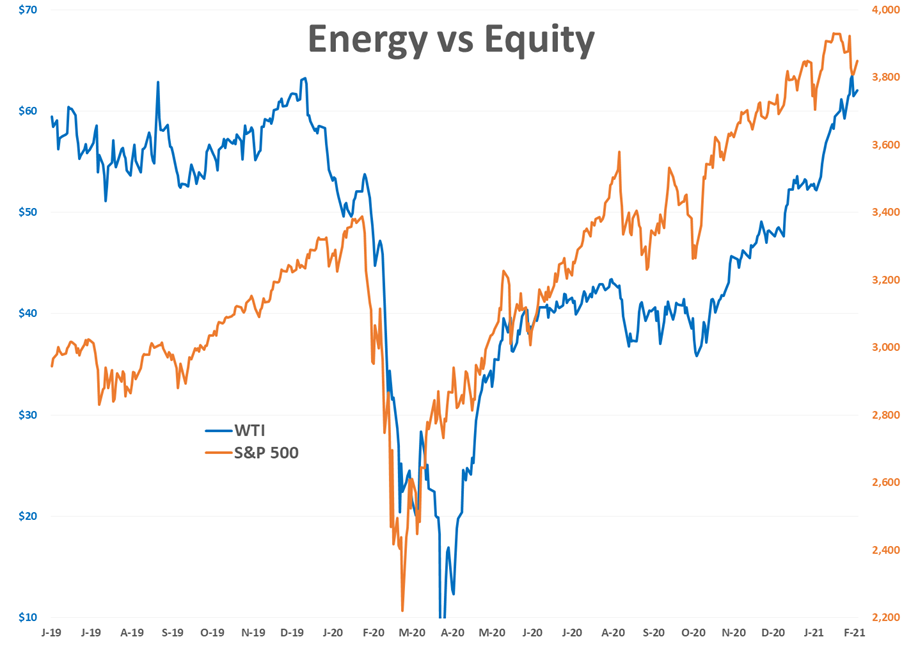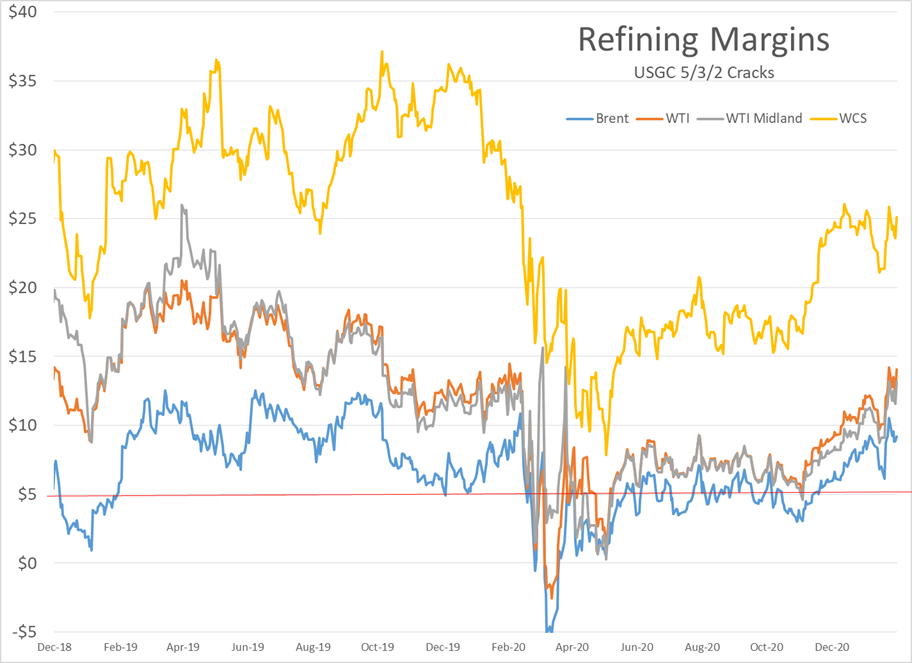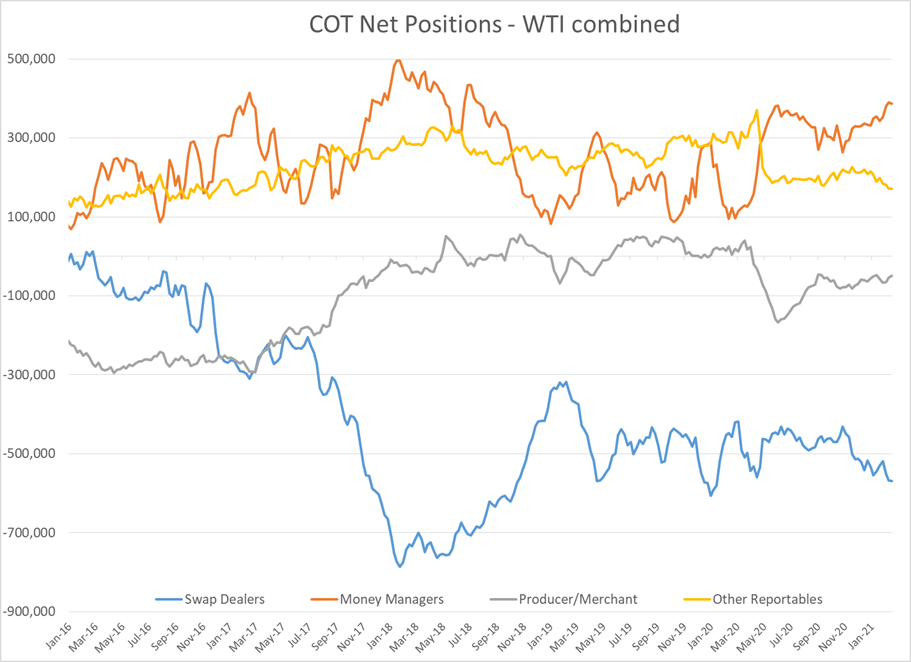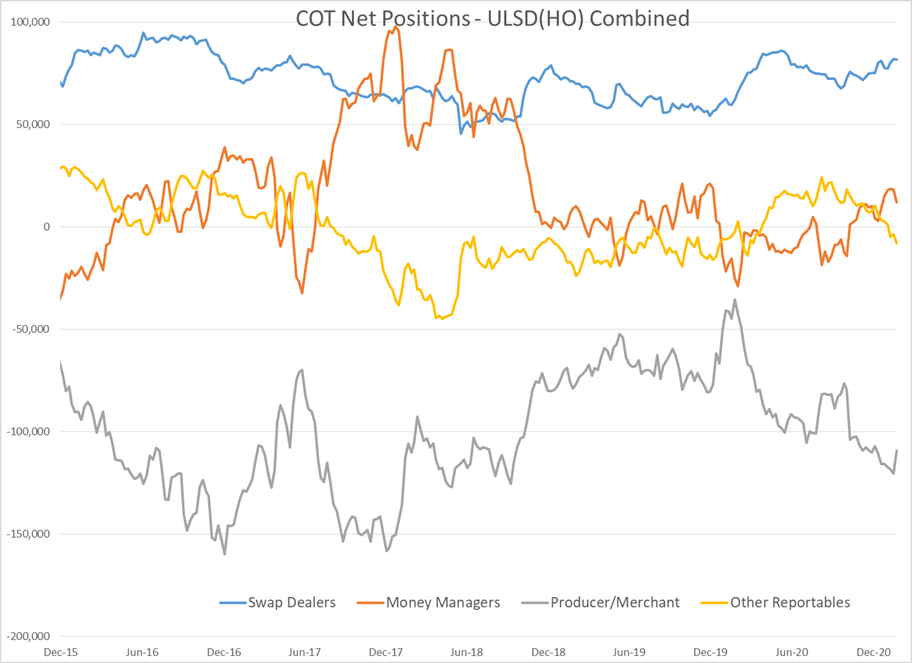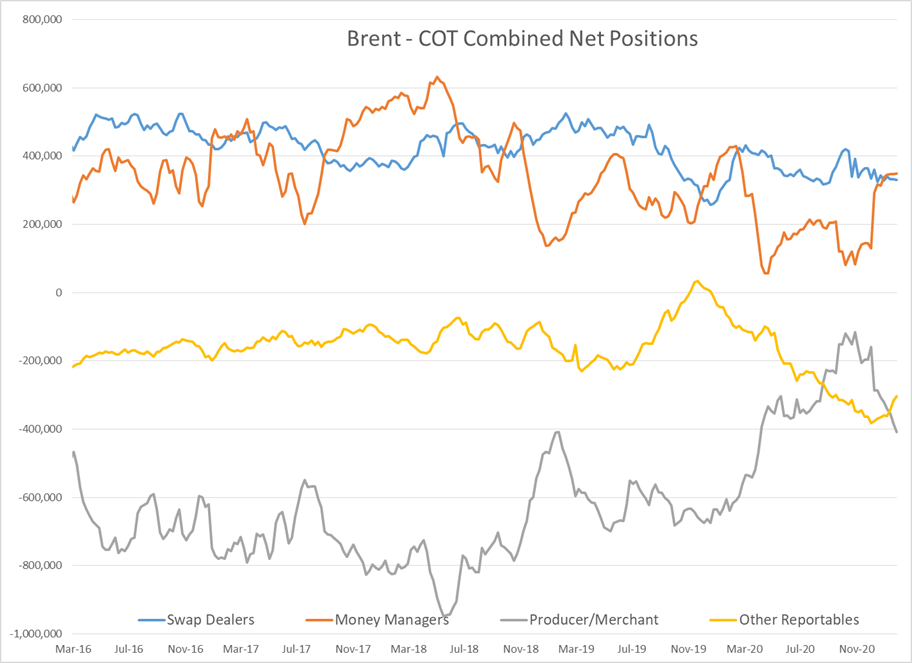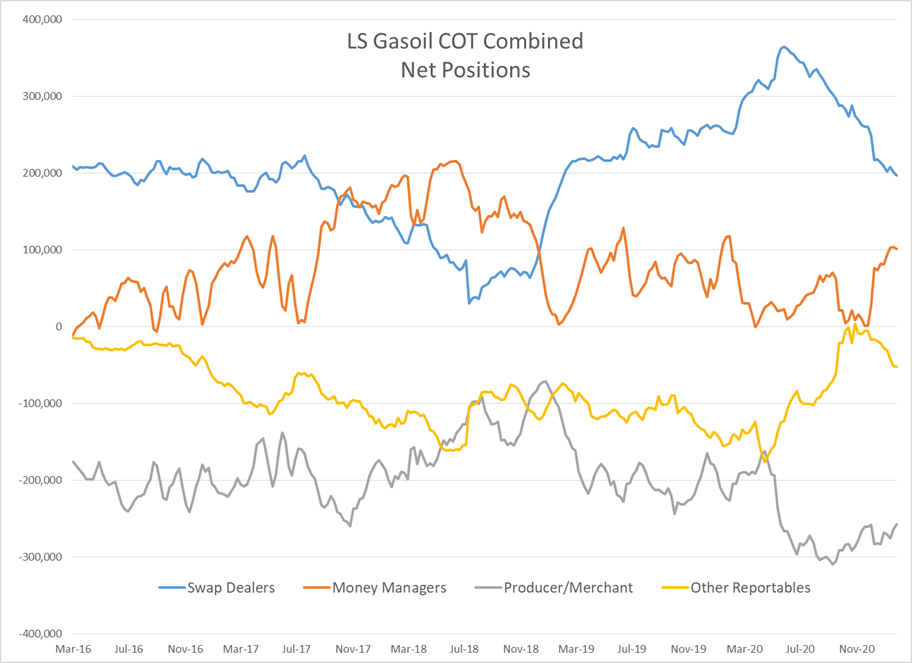House Passes New $1.9 Trillion Spending Bill

After a wave of selling ended a strong February on weak note Friday, energy bulls have picked back up this morning, pushing prices back up 1% or more in the early going, and keeping the upward-sloping trend lines intact for now. Don’t be fooled by the big “increase” in RBOB prices from Friday, April RBOB is now the prompt contract, and is trading some 10 cents above where March left off as we transition to the summer-grade spec, but cash prices are only up around 1.5 - 2 cents so far this morning.
Friday’s selloff in energy contracts coincided with a big pullback in equity markets that appear spooked by a rise in interest rates that means borrowing money won’t be free forever. Stocks are also back on the move higher this morning after the House passed a new $1.9 trillion spending bill this weekend that includes the largest stimulus checks to date and reminds the market that both fiscal and monetary policy makers are eager to do whatever is needed to keep people spending.
Progress with refinery restarts continues across the Gulf Coast with more plants returning to rates similar to where they were at before the polar plunge, while others are still expecting several weeks to finish repairs. Tight allocations remain across much of the southern half of the country, while sporadic outages continue to be largely contained to parts of West Texas.
The shortages continue to help crack spreads for those plants that are able to operate, and Delek mentioned in an earnings call last week that it may restart its Krotz Springs, LA refinery that has been idled for months, if margins hold at current levels. Unfortunately Delek’s El Dorado Arkansas facility suffered a fire during turnaround work this weekend that injured six workers. While that fire won’t impact regional supplies since the plant was already down for the turnaround work, it is a reminder of how complex (and often dangerous) those plants are, and why it’s not like flipping a switch to bring those facilities shut by the storm back online.
OPEC & friends are meeting Thursday to discuss changed to their oil output agreement, and it seems like the market expects them to announce increases to the quota. We know many countries in the cartel are pushing to increase output, which forced Saudi Arabia to announce a unilateral production cut last year to prop up prices, so the question seems to be how much will the Kingdom allow.
Iran rejected direct talks with the U.S. over its nuclear program, a move that suggests tensions between the two countries will continue, and that Iranian oil currently sanctioned is not likely to hit the market (legally anyway) any time soon.
The CFTC weekly commitments of traders report showed new bets on lower prices decreased the net length held by money managers in WTI, ULSD and RBOB contracts last week, while Brent saw a small increase in net length held by large speculators. The net bets on higher prices held by money managers in WTI remains near a 2.5 year high despite the small pull back last week. In gasoline meanwhile, the large speculators seem to be continuing to head for the exits, in what appears to be a bet that the spring rally was actually a winter rally this year, and after prices nearly doubled it’s time for a pullback.
Baker Hughes reported four more oil rigs were put to work last week, all of which came from the Permian basin. Since the total rig count bottomed out in August, we’ve seen the total count increase in 23 out of 28 weeks, adding a total of 137 rigs. On the other hand, there’s still about 470 rigs left to add before we see drilling activity reach pre-COVID rates.
Click here to download a PDF of today's TACenergy Market Talk.
Latest Posts
Gasoline Futures Are Leading The Way Lower This Morning
The Sell-Off Continues In Energy Markets, RBOB Gasoline Futures Are Now Down Nearly 13 Cents In The Past Two Days
Week 15 - US DOE Inventory Recap
Prices To Lease Space On Colonial’s Main Gasoline Line Continue To Rally This Week
Social Media
News & Views
View All
Gasoline Futures Are Leading The Way Lower This Morning
It was a volatile night for markets around the world as Israel reportedly launched a direct strike against Iran. Many global markets, from equities to currencies to commodities saw big swings as traders initially braced for the worst, then reversed course rapidly once Iran indicated that it was not planning to retaliate. Refined products spiked following the initial reports, with ULSD futures up 11 cents and RBOB up 7 at their highest, only to reverse to losses this morning. Equities saw similar moves in reverse overnight as a flight to safety trade soon gave way to a sigh of relief recovery.
Gasoline futures are leading the way lower this morning, adding to the argument that we may have seen the spring peak in prices a week ago, unless some actual disruption pops up in the coming weeks. The longer term up-trend is still intact and sets a near-term target to the downside roughly 9 cents below current values. ULSD meanwhile is just a nickel away from setting new lows for the year, which would open up a technical trap door for prices to slide another 30 cents as we move towards summer.
A Reuters report this morning suggests that the EPA is ready to announce another temporary waiver of smog-prevention rules that will allow E15 sales this summer as political winds continue to prove stronger than any legitimate environmental agenda. RIN prices had stabilized around 45 cents/RIN for D4 and D6 credits this week and are already trading a penny lower following this report.
Delek’s Big Spring refinery reported maintenance on an FCC unit that would require 3 days of work. That facility, along with several others across TX, have had numerous issues ever since the deep freeze events in 2021 and 2024 did widespread damage. Meanwhile, overnight storms across the Midwest caused at least one terminal to be knocked offline in the St. Louis area, but so far no refinery upsets have been reported.
Meanwhile, in Russia: Refiners are apparently installing anti-drone nets to protect their facilities since apparently their sling shots stopped working.
Click here to download a PDF of today's TACenergy Market Talk.

The Sell-Off Continues In Energy Markets, RBOB Gasoline Futures Are Now Down Nearly 13 Cents In The Past Two Days
The sell-off continues in energy markets. RBOB gasoline futures are now down nearly 13 cents in the past two days, and have fallen 16 cents from a week ago, leading to questions about whether or not we’ve seen the seasonal peak in gasoline prices. ULSD futures are also coming under heavy selling pressure, dropping 15 cents so far this week and are trading at their lowest level since January 3rd.
The drop on the weekly chart certainly takes away the upside momentum for gasoline that still favored a run at the $3 mark just a few days ago, but the longer term up-trend that helped propel a 90-cent increase since mid-December is still intact as long as prices stay above the $2.60 mark for the next week. If diesel prices break below $2.50 there’s a strong possibility that we see another 30 cent price drop in the next couple of weeks.
An unwind of long positions after Iran’s attack on Israel was swatted out of the sky without further escalation (so far anyway) and reports that Russia is resuming refinery runs, both seeming to be contributing factors to the sharp pullback in prices.
Along with the uncertainty about where the next attacks may or may not occur, and if they will have any meaningful impact on supply, come no shortage of rumors about potential SPR releases or how OPEC might respond to the crisis. The only thing that’s certain at this point, is that there’s much more spare capacity for both oil production and refining now than there was 2 years ago, which seems to be helping keep a lid on prices despite so much tension.
In addition, for those that remember the chaos in oil markets 50 years ago sparked by similar events in and around Israel, read this note from the NY Times on why things are different this time around.
The DOE’s weekly status report was largely ignored in the midst of the big sell-off Wednesday, with few noteworthy items in the report.
Diesel demand did see a strong recovery from last week’s throwaway figure that proves the vulnerability of the weekly estimates, particularly the week after a holiday, but that did nothing to slow the sell-off in ULSD futures.
Perhaps the biggest next of the week was that the agency made its seasonal changes to nameplate refining capacity as facilities emerged from their spring maintenance.
PADD 2 saw an increase of 36mb/day, and PADD 3 increased by 72mb/day, both of which set new records for regional capacity. PADD 5 meanwhile continued its slow-motion decline, losing another 30mb/day of capacity as California’s war of attrition against the industry continues. It’s worth noting that given the glacial pace of EIA reporting on the topic, we’re unlikely to see the impact of Rodeo’s conversion in the official numbers until next year.
Speaking of which, if you believe the PADD 5 diesel chart below that suggests the region is running out of the fuel, when in fact there’s an excess in most local markets, you haven’t been paying attention. Gasoline inventories on the West Coast however do appear consistent with reality as less refining output and a lack of resupply options both continue to create headaches for suppliers.



